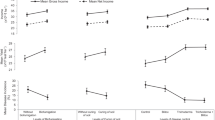Abstract
Banded leaf and sheath blight of maize is caused by a destructive and versatile pathogen Rhizoctonia solani f. sp. sasakii. Integrated management of Banded leaf and sheath blight of maize is done by using the bioagents, botanicals and fungicides under both in vitro and in vivo conditions. Under in vitro conditions among the organic enriched compost, vermicompost showed the maximum mycelial inhibition (83.8 %) at 50 % concentration and in case of bioagents, Trichoderma sp. MDA-1 showed the maximum mycelial inhibition up to 87.1 % followed by Trichoderma koningii-DMA-8 (85.7 %). Aqueous extracts of Eucalyptus globules yielded maximum mycelial inhibition of about 92.1 % at 50 % concentration. Crude extract of Eupatorium adenophorum showed 100 % mycelial inhibition at 2.5 % concentration followed by Melia azedarach with 87.8 % inhibition. Among test fungicides, bavistin at 5 ppm was found most effective to inhibit the pathogen up to 77.1 %. Tilt and companion also resulted in the 100 % mycelial inhibition at 100 ppm. Integrated practices i.e. soil amendment with vermicompost and seed treatment with bavistin @ 2.0 g/kg seed followed by 2 foliar sprays of bavistin @ 0.1 % at 15 days interval (T6) was found to be the best treatment with maximum disease reduction of 73.1 % as compared to that of control. Soil amendment with vermicompost and seed treatment with Trichoderma sp. (MDA-1) + Eupatorium adenophorum (50:50) and 2 foliar sprays of bavistin @ 0.1 % at 15 days interval (T7) recorded 53.8 % disease reduction over control.




Similar content being viewed by others
References
Singh BM, Sharma YR (1976) Evaluation of maize germplasm to banded sclerotial disease and assessment of yield loss. Indian Phytopathol 29:129–132
Bertus C (1927) A sclerotial disease of maize (Zea mays L.) due to Rhizoctonia solani Kuhn. Yearbook, Dept Agric, Ceylon, pp 47–48
Ahuja SC, Payak MM (1984) Symptoms and signs of banded leaf and sheath blight in maize. Phytoparasitica 10:41–49
Payak MM, Renfro BL (1966) Diseases of maize new to India. Indian Phytopath Soc Bull 3:14–18
Payak MM, Sharma RC (1981) Disease and pest situation in high yielding hybrids and composites of maize with special reference to India. A review of pest, diseases and weed complexes in high yielding varieties in Asia and Pacific. F.A.O. Regional Office, Bangkok, pp 84–89
Thakur RS, Sugha SK, Singh BM (1991) Evaluation of systematic fungicide for control of Rhizoctonia solani under glass house condition. Indian J Agric Sci 61:230–232
Mishra B, Roy RP (1996) Rhizoctonia sheath blight of maize. Disease scenario in crop plants, pp 63–68
Sharma RC (2005) Banded leaf and sheath blight (Rhizoctonia solani f. sp sasakii) of maize. In: Zaidi PH, Singh NN (eds) Stresses of maize in tropics Directorate of Maize Research, New Delhi, pp 159–171
Ahuja SC, Payak MM (1983) A rating scale for banded leaf and sheath blight of maize. Indian Phytopathol 36:338–340
Kato A, Inoue Y (1995) Resistance to banded leaf and sheath blight (Rhizoctonia solani Kuhn) after fall of lower sheath in maize. Sochi Shikinjo kenkyu Hokoku. Bull Nat Grassl Res Inst 51:1–5
Sharma G, Saxena SC (2002) Integrated management of banded leaf and sheath blight in maize (Zea mays L.) caused by Rhizoctonia solani (Kuhn). Adv Plant Sci 15:107–113
Falck R (1907) Wachstumgesetze, Wachstmtaktoren und temperature. Wertder holzersterenden Mycelien 1:43–154
McKinney HH (1923) Influence of soil temperature and moisture on infection of wheat seedlings by Helminthosporium sativum. J Agric Res 26:195–217
Huang HC, Hoes JA (1976) Penetration and infection of Sclerotinia sclerotiorum by Coniothyrium minitans. Can J Bot 54:406–410
Ashlesha Jandaik S, Sugha SK (2009) Cow dung preparations in the management of Rhizoctonia solani. Plant Dis Res 24:30–33
Nakasone AK, Bettiole W, Souze RMD (1999) The effect of water extracts of organic matter on plant pathogens. Summa Phytopathol 25:330–335
Sinha RK, Valani D, Chauhan K, Agarwal S (2010) Embarking on a second green revolution for sustainable Agriculture by vermiculture biotechnology using earthworms: reviving the dreams of Sir Charles Darwin. J Agric Biotechnol Sustain Dev 2:113–128
Sharma G, Saxena SC (2001) Evaluation of biocontrol agents against Rhizoctonia solani—the causal agent of banded leaf and sheath blight of maize. Ann Plant Protect Sci 9:144–145
Meena RL, Rathore RS, Mathur K (2003) Efficacy of biocontrol agents against Rhizoctonia solani f. sp. sasakii causing banded leaf and sheath blight of maize. J Mycol Plant Pathol 33:310–312
Kazempour MN, Pedramfar H, Elahinia SA (2003) Effect of certain fungicides and antagonistic fungi on Rhizoctonia solani, the causal agent of rice sheath blight. J Sci Technol 6:151–158
Gogoi NK, Ali MS (2005) Integrated management sheath blight of winter rice evolving Trichoderma harzianum, few soil amendments and captan. Crop Res Hisar 30:423–427
Nene YL, Thapilyal PN (1993) Fungicides in plant disease control, 3rd edn. Oxford and IBH Publishing Company, New Delhi, pp 531–532
Meena, Paul YS (2005) Ecofriendly management of root rot complex disease of pea. Paper presented in the second global conference of plant Health-Global wealth held at Udaipur, India w.e.f. 25–29th November, p 197
Akhtar A, Kumar V, Rani K, Lal HC (2010) Integrated management of banded leaf and sheath blight disease of maize. Plant Dis Res 25:35–38
Meena RL, Rathore RS, Mathur K (2003) Evaluation of fungicides and plant extracts against banded leaf and sheath blight of maize. Indian J Plant Protect 31:94–97
Singh A, Singh D (2011) Integrated disease management strategy of banded leaf and sheath blight of maize. Plant Dis Res 42:192
Acknowledgments
The first author gratefully acknowledges the financial help granted by the Department of Plant Pathology, College of Agriculture, CSK HPAU, Palampur, H.P. 176062, India, for carrying out the research work.
Author information
Authors and Affiliations
Corresponding author
Rights and permissions
About this article
Cite this article
Devi, B., Thakur, B.R. Integrated Management of Banded Leaf and Sheath Blight of Maize Caused by Rhizoctonia solani f. sp. sasakii . Proc. Natl. Acad. Sci., India, Sect. B Biol. Sci. 88, 769–777 (2018). https://doi.org/10.1007/s40011-016-0814-z
Received:
Revised:
Accepted:
Published:
Issue Date:
DOI: https://doi.org/10.1007/s40011-016-0814-z




